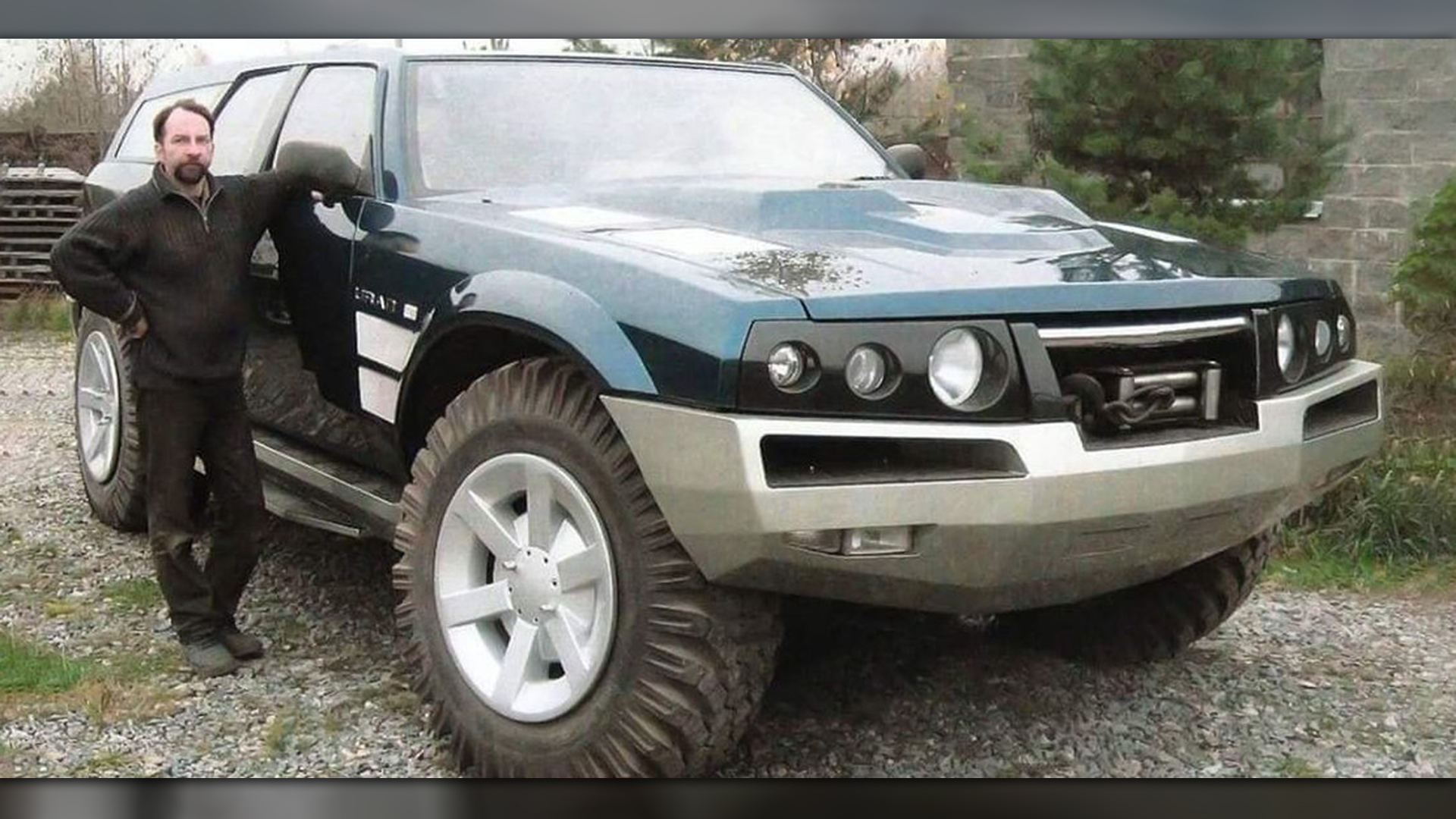

A lot of our international friends often question why American cars are so big. Then they come here and realize how massive our country really is. Now, Russia is nearly twice the size of the United States. Combine that with the legendary ingenuity of its people and I think you see what I’m getting at—it only makes sense that something like the Uran, a one-off custom SUV with cartoonish dimensions and a 16-liter 120-degree V6 out of a tracked infantry fighting vehicle, should exist.
Russia is known for all sorts of home-brew cars and trucks, but this might be one of the most outlandish. It’s definitely the only one with a giant diesel engine from an instrument of war. Actually, scratch that. It wouldn’t surprise me at all if there were others.
I’ll be upfront and say that there’s not a ton of solid information about the Uran, as you might expect for a project hatched in the wilds of 1990s Russia when the country was dealing with the collapse of the USSR. But this much we know: the Uran was the brainchild of designer Gennaday Hainov (also listed as Gennady Hainovym Yevgenyevich in a few places), who achieved a minor measure of automotive fame in the 1980s as the co-creator of a sleek concept car called the Laura. It was cobbled together out of parts of other domestic vehicles, but its aerodynamic design was leaps ahead of the moribund state-run auto industry and impressed Soviet officials.




Hainov went on to found Dragon Motor Company, which is not the turn-of-the-century American manufacturer but a Russian coachbuilder of small, streamline SUVs using UAZ trucks as a base. This is where the Uran’s story emerges from a cloud—at some point in the mid-1990s, Hainov embarked on hand-building a huge SUV whose completely unorthodox engine that meant years and years of custom mechanical work. There are tales of it being commissioned by a wealthy Russian bureaucrat, but that’s impossible to confirm, funny as it is to imagine.
Also tough to nail down is the build timeline, which either took five or 20 years depending on where you look. The surviving photos unfortunately give few clues about when they might have been taken. But we do have some key specs; namely, that the engine is a UTD-20 diesel V6 with a whopping 16 liters of displacement making 300 horsepower and 740 ft-pounds of torque. It was taken out of a Russian BMP-1, a common armored personnel carrier built from 1966 to 1982. Probably not too hard to source after the collapse.

There are sources saying Hainov used parts from planes as well—that we don’t know, but the sheer weight and crazy dimensions of the SUV meant a lot of creative solutions had to be found. The motor alone weighs more than 1,400 pounds, and its 120-degree V bank meant the Uran had to be far wider than your average runabout. The frame itself was custom made; the pneumatic suspension is said to be taken from a LiAZ bus.
You can get of its proportions from this pic of the leather-lined interior, and be sure to note the way the manual transmission and transfer case shifters are mounted on the dash:


Looking at the engine bay, there’s also a big winch positioned where the radiator should be. It seems like Hainov solved this problem by moving the radiators to the sides of the engine, over the wheels. That explains the vents in the truck’s hood, better seen in this picture:

And those wheels! Those are at least 28 inches, with even wilder rubber attached. It’s not exactly attractive, but there is something appealing about its long, flat lines that appeals. At least, to me.
Unfortunately we’ve come up short on reports on what it was like to drive—cumbersome would be my guess—or if everything worked as intended. Equally mysterious is what happened to it. The Russian bureaucrat story ends with him rejecting the final product because it was too ostentatious. Sure. Some of these shots show it under a tarp and a thick layer of dust, so it seems likely it’s sitting in a warehouse or garage somewhere in Russia, slowly wasting away. Quick, someone get those guys from Garage 54 on the case. This thing deserves a second chance.
Got a tip? Send us a note: tips@thedrive.com